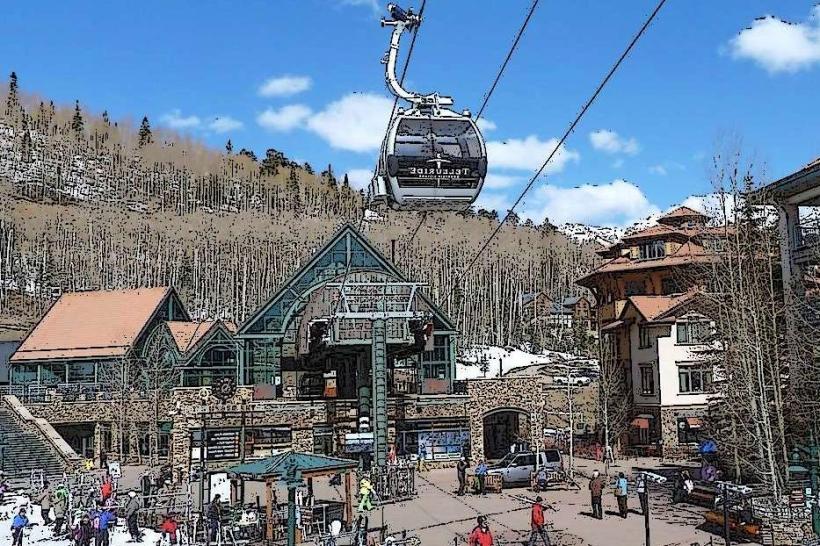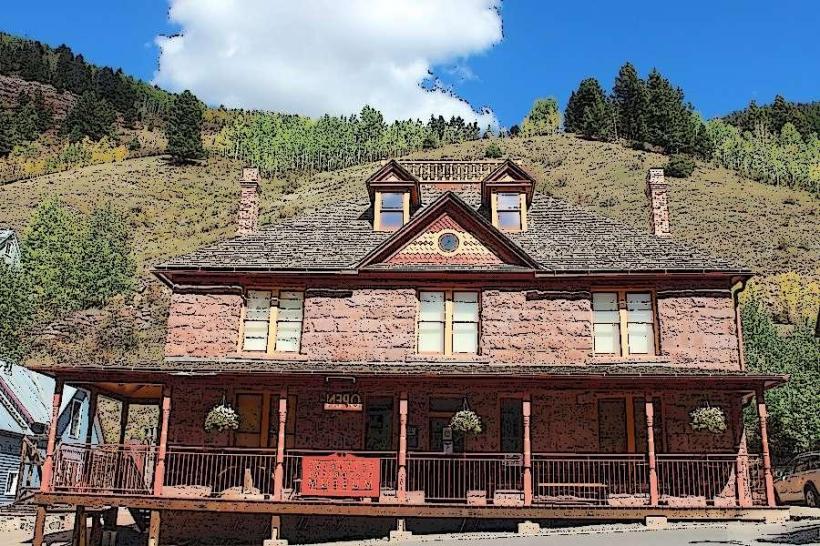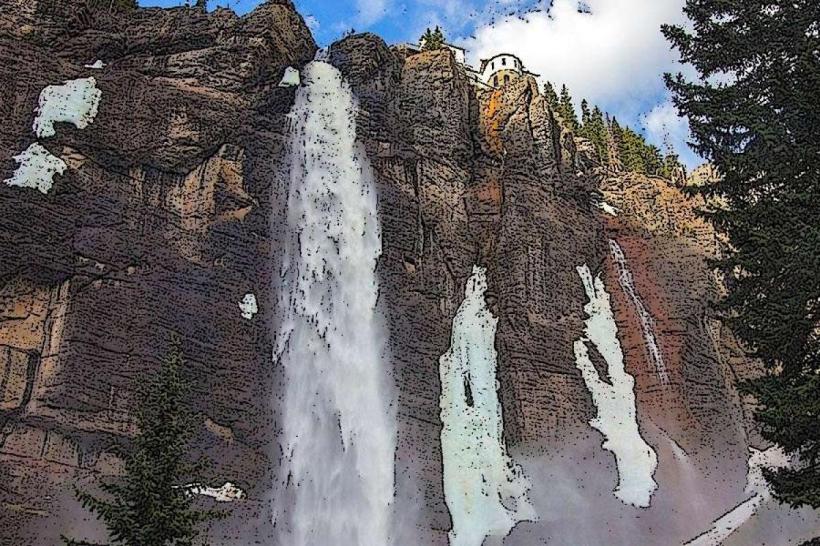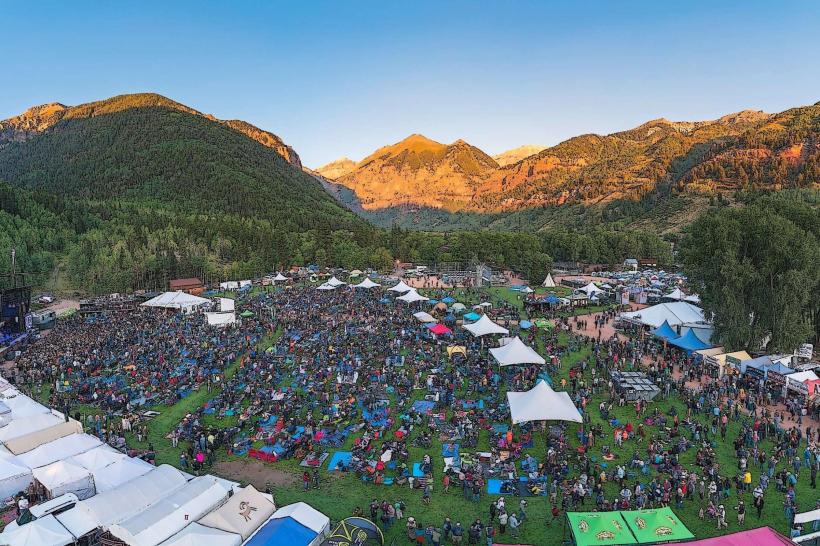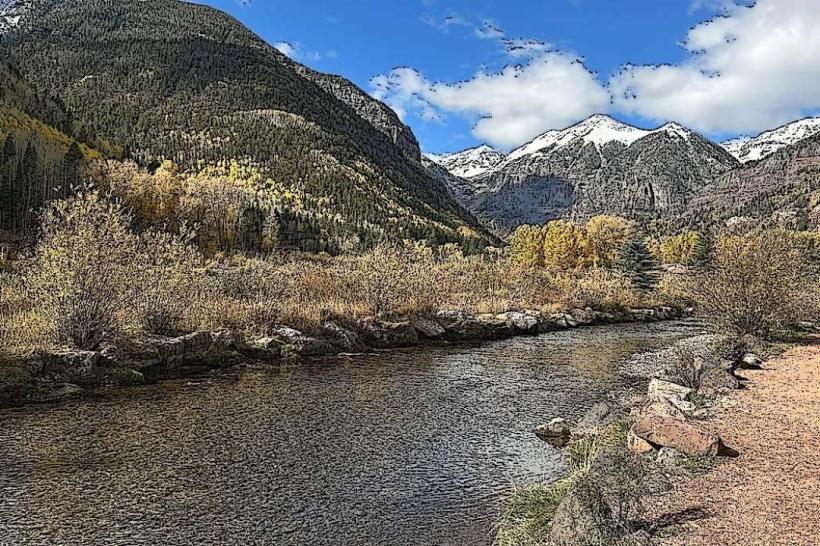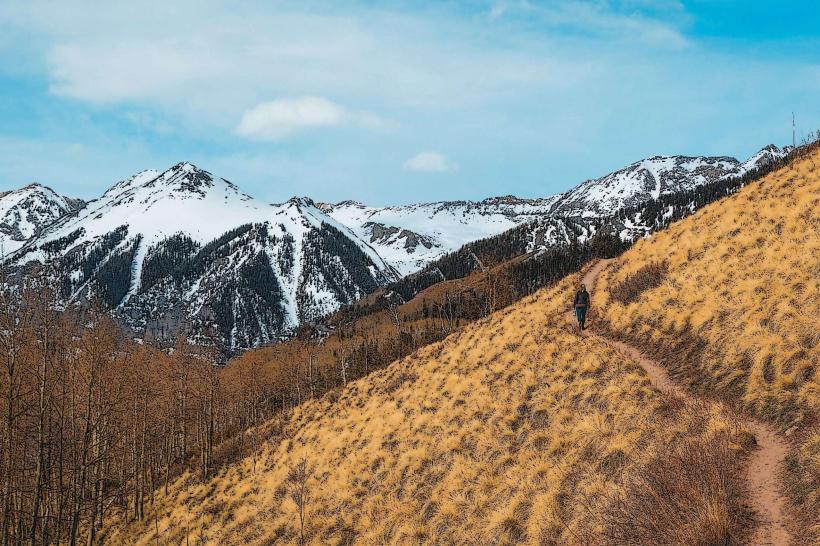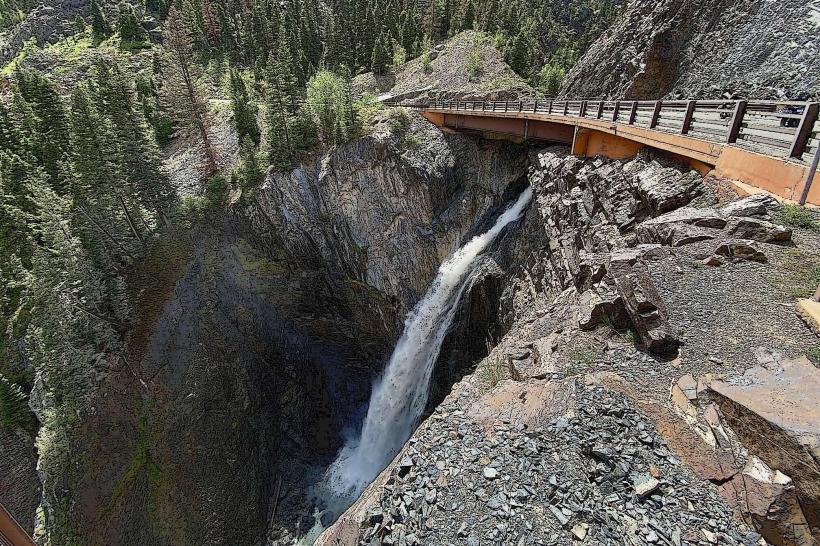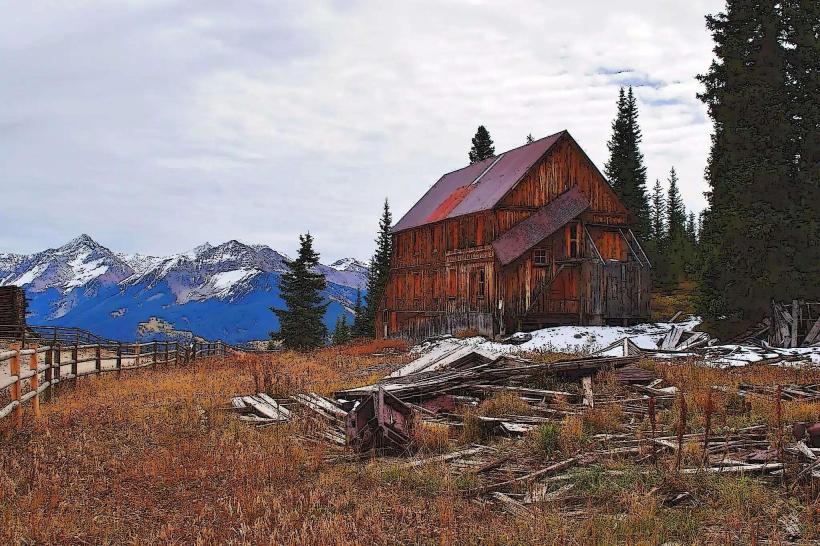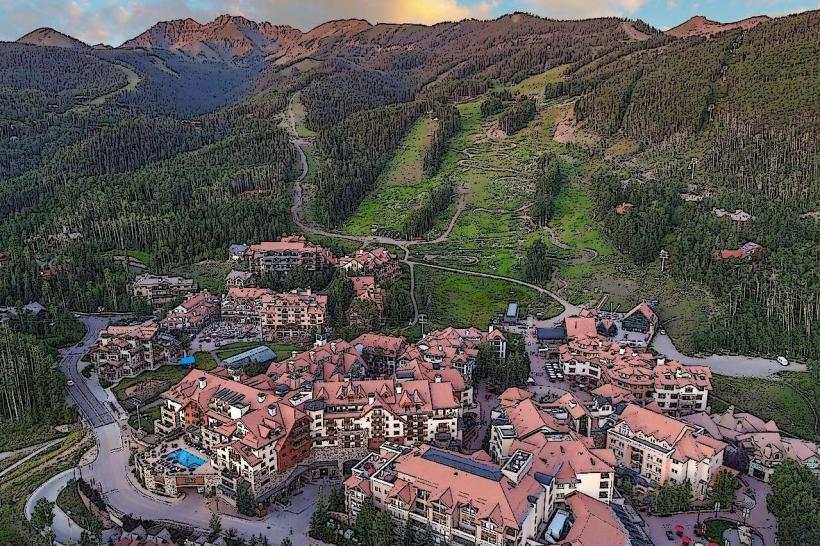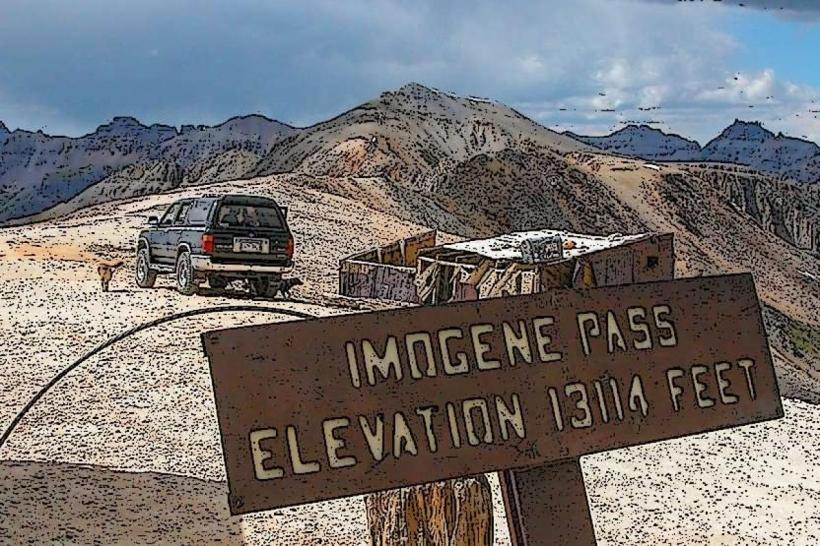Information
City: TellurideCountry: USA Colorado
Continent: North America
Telluride, USA Colorado, North America
Telluride, Colorado is one of the most stunning and iconic mountain towns in North America. Nestled in a box canyon high in the San Juan Mountains of southwestern Colorado, it blends wild natural beauty, historic charm, upscale alpine living, and elite outdoor adventure. Though remote, Telluride is internationally known for its world-class skiing, film and music festivals, mining-era architecture, and breathtaking alpine setting.
GEOGRAPHY AND NATURAL LANDSCAPE
Elevation: The town of Telluride sits at 8,750 feet (2,667 meters), while the surrounding peaks rise to over 13,000 and 14,000 feet.
Box Canyon Setting: Telluride is enclosed on three sides by near-vertical granite and shale cliffs, giving it a secluded, awe-inspiring feel.
Bridal Veil Falls: Colorado’s tallest free-falling waterfall (365 feet) towers at the head of the canyon and is a year-round spectacle.
Mountain Village: A separate community above Telluride at 9,545 feet, connected to town by a free public gondola-unique in the U.S.
The geography is extreme: jagged ridgelines, high basins, deep forests, alpine meadows, waterfalls, and talus slopes-all within walking distance of town.
CLIMATE
Telluride experiences a high-alpine climate marked by:
Long Winters: Heavy snowfall from November through April, often exceeding 300 inches per year, ideal for skiing and snowboarding.
Cool Summers: Daytime highs in the 60s–70s°F (16–25°C), cool nights, low humidity, and frequent afternoon thunderstorms.
Spectacular Falls: Golden aspens and vivid mountain foliage dominate in September–October.
Short Spring: Rapid snowmelt leads into the summer wildflower season.
HISTORY
Indigenous History: Originally inhabited by the Ute people, who used the high country seasonally.
Mining Boom: Gold and silver were discovered in the 1870s. Telluride flourished as a mining town in the late 19th and early 20th centuries.
Name Origin: Possibly derived from “tellurium,” a rare metal, or from an abbreviation of “To hell you ride,” referencing the wild journey into the rugged valley.
Innovation: Site of the first long-distance AC power transmission (1891) from Ames Station to Telluride mines-engineered by Nikola Tesla's technology.
Modern Transformation: In the 1970s, Telluride reinvented itself as a ski destination and arts hub, attracting skiers, artists, musicians, and entrepreneurs.
Today, Telluride preserves its Victorian-era architecture and outlaw legends while embracing high-end living and outdoor culture.
TOWN STRUCTURE AND DISTRICTS
Historic Downtown Telluride
Designated as a National Historic Landmark District.
Features preserved clapboard and brick buildings, boutique shops, gourmet restaurants, art galleries, and rustic hotels.
Colorado Avenue is the main street, set against towering cliffs and waterfalls.
No chain stores or fast food-strictly locally owned, preserving authenticity.
Mountain Village
A separate but interconnected alpine resort village built in the 1990s.
Contains ski-in/ski-out condos, luxury hotels, golf courses, and fine dining.
Accessed by a 13-minute gondola ride, offering panoramic views of the valley below.
CULTURE AND FESTIVALS
Telluride is as much an arts and culture capital as it is an outdoor destination:
Telluride Film Festival: One of the most prestigious film events in North America, drawing major industry figures and premieres each Labor Day weekend.
Telluride Bluegrass Festival: Iconic summer gathering with world-class acoustic music under the mountains.
Telluride Jazz Festival, Blues & Brews, Mountainfilm, and Telluride Yoga Festival fill the year with music, activism, and wellness.
Art Walks, gallery nights, and pop-up performances happen regularly.
This rich creative calendar attracts artists, thinkers, and performers from around the world, giving Telluride a cosmopolitan vibrancy despite its small size.
OUTDOOR RECREATION
Telluride offers four-season, high-intensity outdoor adventure at every level.
Winter
Telluride Ski Resort:
2,000+ acres of skiable terrain
Vertical drop of over 4,400 feet
Wide range of beginner to expert runs, with exceptional double-black terrain and hike-to bowls
Regularly ranked among the top ski resorts in North America for terrain quality and lack of crowds
Backcountry Skiing: Access to untouched powder in Bear Creek and surrounding basins.
Heli-skiing: Operated by Helitrax, offering remote alpine descents.
Snowshoeing & Nordic Skiing: Groomed trails and backcountry access across the region.
Summer
Hiking: Hundreds of miles of trails, including:
Jud Wiebe Trail (in-town loop with overlooks)
Wasatch Trail, Sneffels Highline, and Blue Lake
Biking: Lift-served mountain biking in the resort; backcountry trails for experienced riders.
Climbing: World-class alpine rock climbing, bouldering, and via ferrata (fixed cable route along canyon walls).
Rafting/Kayaking: San Miguel River offers moderate whitewater runs.
Paragliding: Popular launch from Gold Hill; flights land in Town Park.
ECONOMY AND DEMOGRAPHICS
Population: About 2,500 full-time residents in Telluride, ~1,400 in Mountain Village, but swells to over 15,000 during peak festivals or ski season.
Economy: Primarily tourism-based with support from:
Outdoor recreation
Luxury real estate and second homes
Hospitality, dining, and wellness
Arts and media industries
Median Household Income: High relative to national average, though income inequality exists due to housing costs and service sector wages.
Local Character: Mix of outdoor athletes, creatives, entrepreneurs, environmentalists, and long-time locals.
EDUCATION AND COMMUNITY
Telluride School District: High-performing schools serving K–12; small class sizes and a strong community base.
Telluride Institute and Telluride Foundation support local sustainability, arts, and rural innovation.
Library and Learning: The Wilkinson Public Library is an award-winning institution with programs for all ages.
Despite its luxury reputation, Telluride works hard to preserve local culture, education, and community integrity through outreach and housing initiatives.
TRANSPORTATION
Remote Access: Telluride’s isolation is both part of its charm and challenge.
Telluride Regional Airport (TEX): One of the highest commercial airports in North America, with limited seasonal flights.
Montrose Regional Airport (MTJ): 65 miles away, offers broader year-round service with shuttles to Telluride.
Gondola System: Free public transit linking town and Mountain Village, open day and night in all seasons.
Walkability: Telluride is highly walkable, with most destinations within minutes by foot.
ARCHITECTURE AND AESTHETIC
Victorian Preservation: Original miners’ homes, historic hotels like the New Sheridan, and preserved saloons maintain 1800s character.
Design Restrictions: Building height and design codes protect historic views and town scale.
Mountain Modern: In Mountain Village and newer developments, contemporary alpine architecture blends stone, timber, and glass.
Telluride is more than a resort-it’s an alpine sanctuary where history, luxury, wilderness, and culture converge. With no stoplights, chain stores, or traffic noise, it offers a refined yet rugged lifestyle at the edge of the wild. Whether skiing untracked powder, hiking to an alpine lake, attending a film premiere, or sipping wine under starry skies, Telluride delivers a rare, cinematic, high-altitude experience.

